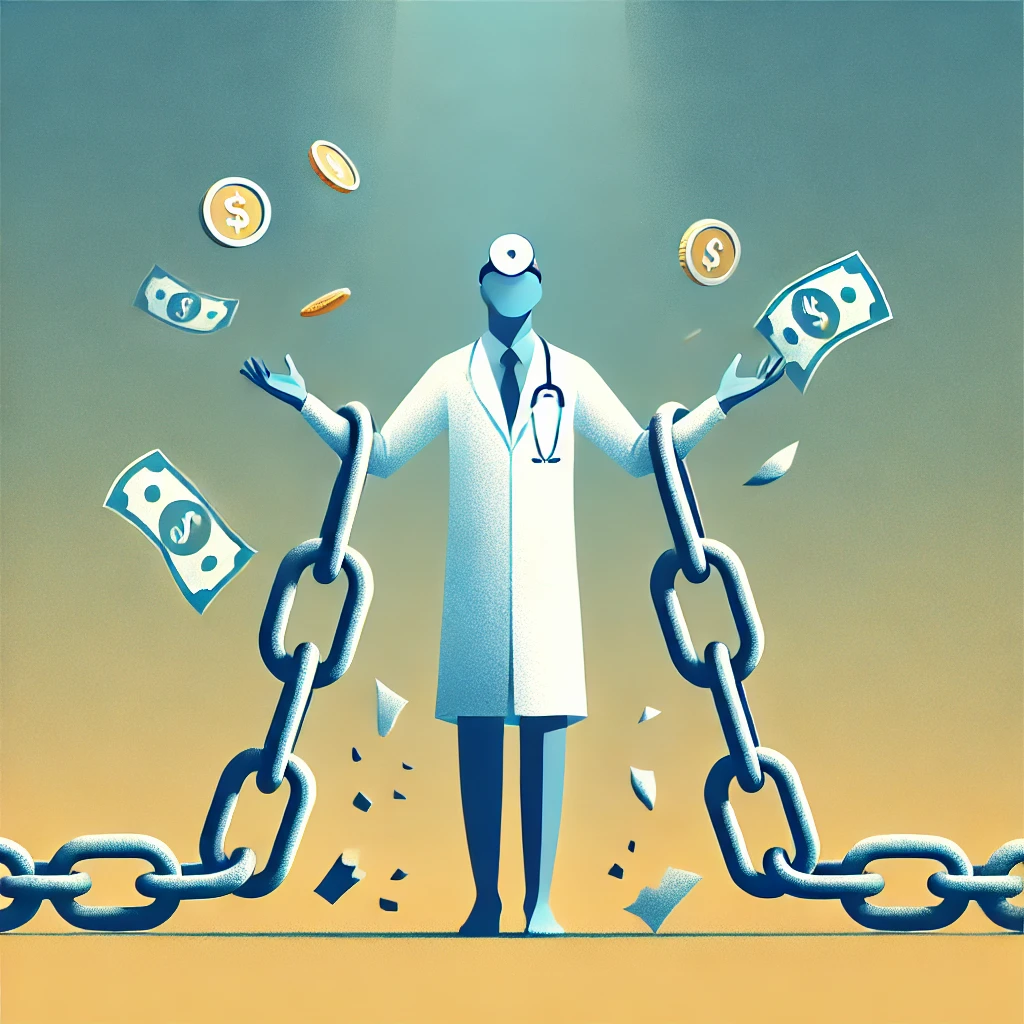
Debt is an unavoidable part of a medico’s journey—whether it’s student loans, personal loans, or professional liabilities. But debt doesn’t have to control your life. This guide will help medicos navigate the challenges of managing loans effectively, ensuring financial freedom and peace of mind.
1. Understanding the Debt Trap
What Is a Debt Trap?
A debt trap occurs when your income is insufficient to cover loan repayments, forcing you to take additional loans to stay afloat. Over time, interest accrues, and escaping this cycle becomes increasingly difficult.
How It Affects Medicos:
- High student loans with compounding interest.
- Additional expenses like clinic setups or specializations.
- Irregular incomes during training years.
2. Types of Loans Commonly Taken by Medicos
- Student Loans: The most common debt, often with high interest rates.
- Personal Loans: Used for emergencies or lifestyle upgrades.
- Business Loans: For setting up private practices or clinics.
- Credit Card Debt: Accumulated from medical equipment purchases or daily expenses.
3. Strategies to Manage and Reduce Debt
a) Prioritize High-Interest Debt
- Focus on paying off loans with the highest interest rates first (e.g., credit cards).
- Use the debt avalanche method: Pay minimum amounts on all loans except the one with the highest rate, where you make larger payments.
b) Consolidate Your Loans
- Consider consolidating multiple loans into one with a lower interest rate.
- Explore refinancing options to negotiate better terms with your lender.
c) Create a Loan Repayment Plan
- Allocate a specific percentage of your income toward loan repayment (e.g., 20–30%).
- Stick to your plan to avoid falling behind on payments.
4. Avoiding Common Debt Mistakes
Mistake 1: Taking Loans Without a Plan
- Always assess your repayment capacity before borrowing.
Mistake 2: Using Loans for Non-Essential Expenses
- Avoid financing luxury items or vacations with loans.
Mistake 3: Skipping Payments
- Missing payments can damage your credit score and lead to penalties.
5. Boost Your Income to Pay Off Debt Faster
Ideas for Medicos:
- Take on locum jobs or freelance work.
- Offer tutoring or coaching for medical entrance exams.
- create content in your area of expertise.
6. Building a Debt-Free Mindset
Focus on Saving:
- Start an emergency fund to avoid taking additional loans during unforeseen circumstances.
Plan for the Future:
- Once debt-free, allocate the amount previously used for repayments toward investments.
7. When to Seek Professional Help
- If you’re struggling with multiple loans, consult a financial advisor or credit counselor.
- They can help restructure your debts and negotiate with lenders for better terms.
Conclusion
Debt doesn’t have to be a lifelong burden. With the right strategies and discipline, medicos can break free from the debt trap and work toward financial independence. Remember, every small step counts—whether it’s paying an extra ₹500 toward your loan or creating a structured repayment plan.
Stay tuned for more actionable financial advice tailored for medicos.

